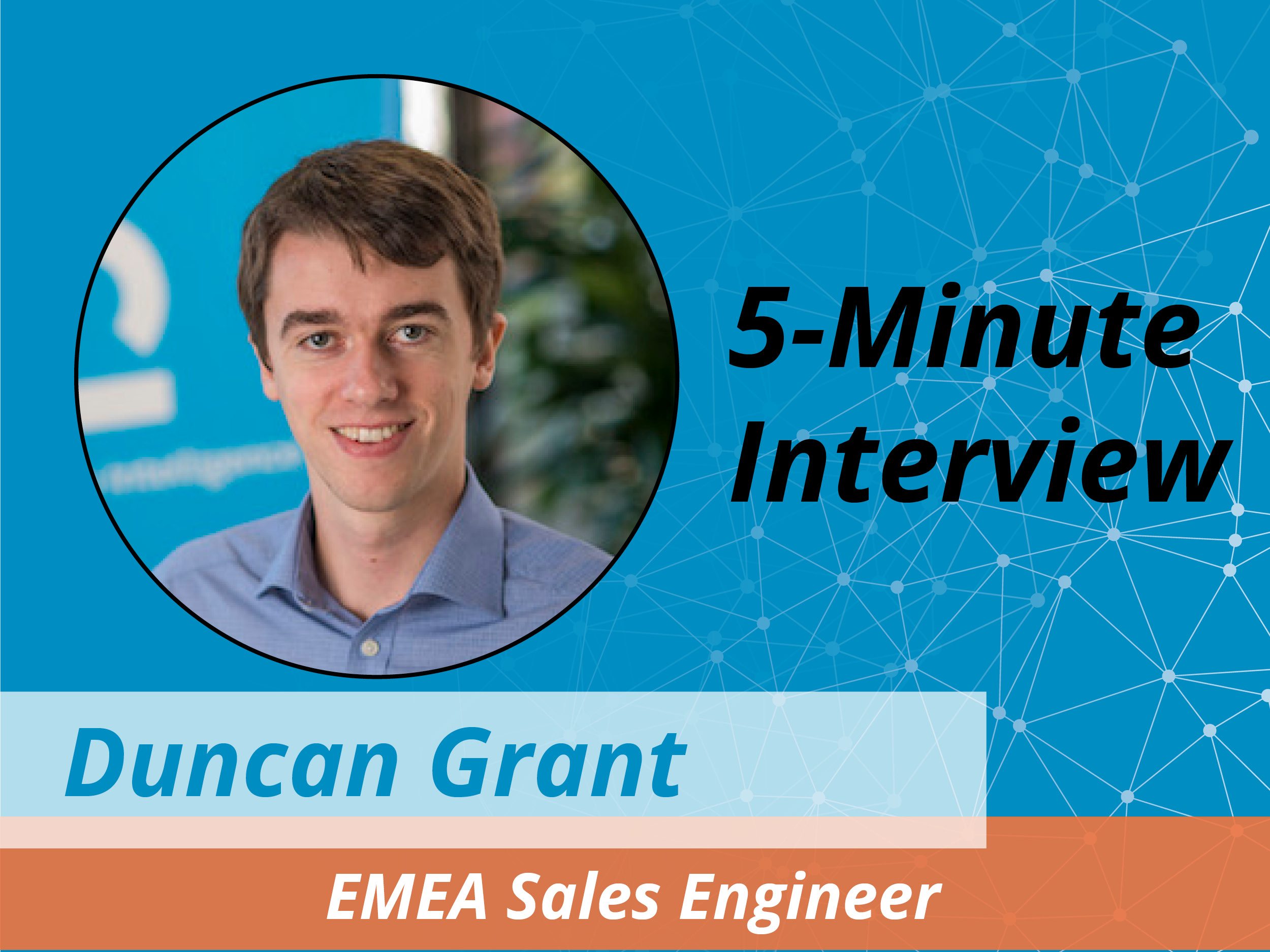 “The great thing about Cypher and Neo4j is that you can start working with them easily, even without knowing everything about them,” said Duncan Grant, EMEA Sales Engineer at Cambridge Intelligence.
“The great thing about Cypher and Neo4j is that you can start working with them easily, even without knowing everything about them,” said Duncan Grant, EMEA Sales Engineer at Cambridge Intelligence.Grant first became familiar with Neo4j when he started working for Cambridge Intelligence. He didn’t have any prior experience with the database, but found the tool’s documentation and Cypher query language extremely user-friendly.
In this week’s five-minute interview (conducted at GraphConnect San Francisco), we discuss his experience learning how to use the database, and the company and trade-mapping projects currently underway.
Talk to us about how you first became familiar with Neo4j.
Duncan Grant: I first heard about Neo4j five or six years ago when I was researching databases, but didn’t start working with a graph database until I joined Cambridge Intelligence about two years ago.
What made your team choose to work with Neo4j?
Grant: It’s a well-established graph database that fits well with our products — for example, we have a number of graph visualization systems built off Neo4j. A great feature of Neo4j is its documentation, which makes it really easy for people who are new to graph databases and theories get started. We also really like Neo4j’s graph query language, Cypher.
What are some of the most interesting projects you’ve been working on with Neo4j?
Grant: We’re currently working on a project for a client to map companies and directors. There are large conglomerates with a number of subsidiary companies underneath them, and we are helping determine where certain failures within the company originate. For example, perhaps you can find an underperforming director who is connected to multiple companies and failed projects. Or if a company has had to close because it’s unsuccessful, they might want to find out why.
Another project I’m working on that isn’t customer related uses online world trade network data, which includes all incoming and outgoing trade transactions for every country in the world. Neo4j allows us to ask questions such as, “Who are this country’s biggest trade partners?” You can then build up a company network and glean insights into the relationships between them, including power dynamics.
If you could go back in time and do anything differently, what would it be?
Grant: The great thing about Cypher and Neo4j is that you can start working with them easily, even without knowing everything about them. A few months ago, I completed the online Neo4j development course, which was a great opportunity to learn more about the inner workings of Neo4j. To prepare for that test, I learned a lot about the platform that I didn’t know before. If I could go back in time I would have done the training sooner.
Is there anything anything else you’d like to add or say?
Grant: I think Neo4j is a great graph database that works really well with Cambridge’s network visualization tool KeyLines. If you want to work with a graph database and develop really good visualized data, they’re two complementary products.
Want to share about your Neo4j project in a future 5-Minute Interview? Drop us a line at content@neo4j.com.
Click below to register for our online training class, Introduction to Graph Databases and master the world of graph technology in no time.
Sign Me Up



